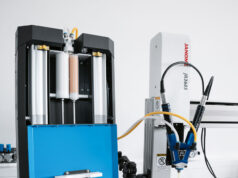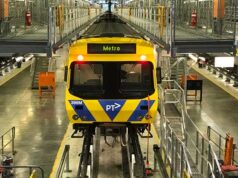Stephen Burrows – Pres.
Twintec, Inc.
Modern pneumatic systems have improved greatly in the last 20 years. Attention to air quality, better permanent lubrication and quality engineered components have produced more reliable, lower maintenance and more durable systems than ever before. It seems odd then, that with such a great increase in the design quality of modern pneumatic systems that one of the most basic components is so widely overlooked.
Most complex pneumatic systems lack any kind of tubing connections that maintain their original orientation when disconnected, then re-connected. This is in stark contrast to electrical and electronic systems where the practice of accurately reproducing the original orientation of circuits by multiple pin connectors is standard practice. Re-attaching wires one by one is almost unheard of.
Since the complexity of pneumatic systems is usually significantly less than that of electrical and electronic systems, designers try to reduce system costs by leaving multiple tube connectors out. The result of this practice is a history of unreliable systems that deteriorate rapidly and suffer catastrophic failure at a high rate. Electrical designers have from the very beginnings of the industry invariably used keyed multiple pin connections to insure proper circuit alignment. A mixed connection almost always led to catastrophic failure. Only in the last couple of decades have pneumatic systems reached complexity similar to electrical systems. The use of multiple tube connections has not grown with the complexity of pneumatic circuits.
Current practice is to mark the tube and the individual fitting. To ensure that the assembled system works, every system needs to be carefully tested. If components of the system have to be separated for transport, additional testing is required at installation. The use of multiple tube connections can remove the need to test the tubing harness after it is assembled into the system and when the system is installed. Tubing harnesses can be tested during their assembly in parallel to the building of the system.
The potential cost savings for using multiple tube connectors can be calculated by multiplying the estimated number of times a system suffers damage due to mixed connections over its lifetime, times the cost of repair and downtime. This is the total lifetime cost of tubing errors. This cost less the cost of a multiple tube connector is the total lifetime savings gained by its use. If the connector’s cost is recovered in less than a year it constitutes an excellent return on investment based on cost accounting methods.
Other benefits of the use of multiple tube connections can create returns far in excess of its simple cost accounting return. Increased throughput in the delivery of finished systems with existing resources tops the list followed by: reduced liability for injury to users and damage to systems and products, simplified maintenance by users, rapid replacement of modules, reduction in need for skilled technicians, enhanced appearance, demonstration of proper design, future sales ensured by increased system reliability, ability to create ever more complex systems that are highly reliable.
Currently, multiple tubing connectors for pneumatics are available from several manufactures. Many types are available, such as circular connectors with threaded collars for regular use and rectangular connectors that are held together with fasteners for occasional use. Some manufacturers offer choices of body materials and methods for attaching the tubes to the body of the connector. Your pneumatics dealer should be an excellent source for help in specifying the proper connector for your application.









